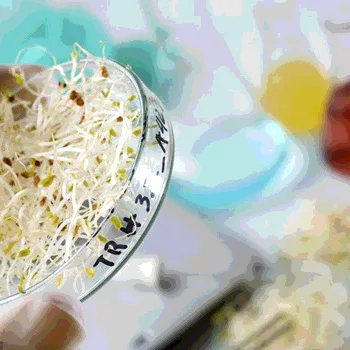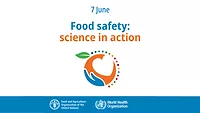Will (or Can) Food Science Prevail in Today’s World?

If you want to see what the convergence of social media, government, flawed studies and a polarized society can do to torpedo food science and relevant research, you need look no further than the organic food movement. In the 1980s, it looked like the word ‘organic,’ as a food descriptor would go the way of the word ‘natural.’ That is, ubiquitous, confusing and more a marketing term than a definition. A few months back, a New York Times article said that the food industry never let science get in the way of a good marketing gimmick.
A U.S. ‘solution’ came with the 1990 passage of the Organic Food Production Act (OFPA). Under OFPA, the U.S. Department of Agriculture (USDA) would appoint a 15-member National Organic Standards Board (NOSB) to serve as an advisory group to USDA. The first all-volunteer members of the NOSB were appointed in 1992, and the defining goal of the NOSB was to promote agriculture that “enhances biodiversity, biological cycles and soil biological activity.”[1] With that goal in mind, the NOSB and USDA established a labeling program, as well as a list of processes, ingredients and applications that would be suitable for organic foods.
In general, the aim was to favor ingredients or processes that were themselves organic. That means that certain organic pesticides, for example, are allowed on the National List of Allowed and Prohibited Substances[2] and in organic farming. It means that ingredients that add color or texture or taste to organic foods are more likely to be allowed if they are sourced organically, even if there are other options for additives or ingredients designated as synthetic or nonsynthetic.
The composition of the 15-member NOSB is established in the OFPA, and it provides one designated space for a scientist. The remaining slots are portioned out to include organic farmers, organic handlers, an organic retailer, those devoted to environmental protection, public interest groups and one accredited certifying agent.[3]
It is important to note what the OFPA and USDA labeling program was not intended to do. It was never USDA’s intention to imply that organic foods were inherently safer or healthier than conventional foods. In fact, USDA has been forced to emphasize that fact on several occasions.[4] It was not intended to limit the size of agricultural or food processing businesses that could use the organic label.
The difficulty of organic labeling came with the fact that the higher costs of organic foods were difficult to justify to consumers based solely on biodiversity, biological cycles or soil biological activity.
For the organic label to work, some organics proponents have found it useful to make consumers fear conventional foods.
Attitudes
The NOSB now considers three prominent criteria for approval of substances suitable for organic foods that are not themselves organic. They include safety, essentiality and sustainability.[5] Of the three, safety has become the most contentious and the one driven least by credible science—a demonstration of choosing research that frightens rather than enlightens. While no one should doubt the earnestness with which NOSB members go about their task, it is not a body of scientists, nor does it have final regulatory authority over food safety.
What poses a great challenge to the NOSB is that the growth of the organic food business in the U.S.—now at approximately $43.3 billion[6]—is commensurate with the growth in public mistrust in many aspects of our lives and the explosion of social media. We now increasingly mistrust media, government, business and science, and we have a social media environment that exacerbates and feeds upon that mistrust.
Science
We have always been somewhat wary of science. Evidence suggests that we prefer scientific claims that engage our capacity to see conspiracies in everything from fluoridated water[7] to Alar[8] to the safety of cranberries in our Thanksgiving dinner.[9] Currently, many are loudly proclaiming our doubts about evolution, climate change, vaccines and genetically modified organisms (GMOs). In a January 2015 issue of The Atlantic,[10] a strong case was made that we continue to value science but only when it confirms our preexisting beliefs. An educator quoted in the magazine said, “We build philosophical structures, and when we encounter information, we plug it into those structures.”
If you believe that those mistrustful of science or hesitant to accept scientific validity are of a certain uneducated class, or driven by religion or other belief systems, you are likely wrong.
In a 2015 issue of National Geographic,[11] a study[12] was cited by Andrew Schtulman of Occidental College, suggesting that even those with a scientific bent resist information that might be outside a philosophical construct. In the Occidental study, students with advanced science educations were asked to affirm certain established scientific facts. The students would quickly affirm that humans are descended from tree-dwelling creatures or that the Moon revolves around Earth.
They were less quick to affirm that we are descendant from sea creatures or that Earth revolves around the Sun—facts that are counterintuitive. When it comes to the food sciences, this need to believe the science of our choice has given rise to an entire industry attempting to influence government and consumers. Prominent in those efforts is the idea that any science funded by industry is inherently corrupt and that government reliance on such science taints government with the same brush.
If you look at websites run by the Natural Resources Defense Council (NRDC)[13] or the Cornucopia Institute,[14] for example, you’ll find plenty of evidence of groundless health claims, flawed science and allegations of government corruption. Here is the NRDC on the U.S. Food and Drug Administration (FDA):[15] “Chemical safety assessments at the FDA are spotty, weakly enforced and often dependent on outdated research.” The Cornucopia Institute website is laden with allegations of government malfeasance, including charges of corruption and undue industry influence at FDA, USDA and the NOSB.
In the past, Cornucopia has alleged a federal investigation was ongoing of a USDA executive (there wasn’t),[16] sued USDA and filed complaints about the appointment of NOSB members.[17] The idea that government employees or volunteers at FDA, USDA or the NOSB could be dedicated to maintaining the world’s safest food supply cannot be accepted if the work runs counter to movement claims.
Organic Valley,[18] for instance, lists five reasons why you should buy organic food. The third is “because chemicals are bad for you.” The word ‘chemical’ is often used pejoratively while ignoring that everything is ‘chemical.’ Although numerous examples exist pointing out this fact, “chemophobia” continues to grow. All of these efforts include selected research fully intended to drive behavior without providing any context or opposing research.
Media
Science has always had an uneasy relationship with mainstream media, yet it is easy now to remember fondly when your daily newspaper had a weekly science section. Today, you may not even have a daily newspaper, and science journalism is rare. In the Editor & Publisher’s Data Book of 2014, there were 126 fewer daily newspapers listed than in 2004. A Pew Research Center report on journalism in June of this year[19] said that the newspaper workforce has shrunk by 20,000 in the last 20 years. There is very little indication that the jobs saved are those of science writers.
If you work in food sciences today, you are far more likely to interact with a food writer than you are a science writer. That can be a steep learning curve for both. While it is true that there are outstanding science journalists working online or in social media, any opinion that is measured or carefully looks at science is shouted down, as you can ascertain by reading the comments following any food safety story that attempts to mitigate fear-mongering.
Instead, we circulate the science that matches established opinions. Another Pew study in March of 2014[20] said that 64 percent of adults got their news on Facebook, but that news was often an item forwarded by a friend with similar views, resulting in the viral distribution of suspect science. That swirl of fury and mistrust is an ideal environment for feeding fear and driving regulatory decisions and that is exactly the challenge faced by the NOSB.
The Carrageenan Example
Carrageenan is a stabilizer approved as a nonsynthetic ingredient appropriate for use in organic foods. The red seaweed from which it is derived has been used in foods in some cultures for more than 600 years.[21] It has no history, even anecdotally, of causing harm or widespread illness despite its use by millions of consumers.
While carrageenan is nonsynthetic, rather than organic, it should easily pass any organic threshold related to sustainability. The bulk of the carrageenan used in foods is harvested by aquatic farmers in Africa or Asia in ways that are environmentally friendly and sustainable.[22] In certain formulations, particularly dairy products, carrageenan is the preferred stabilizer because it is readily available, does not require the addition of other stabilizers that would add to the length of food labels, does not degrade during processing and provides the ‘mouth feel’ that consumers prefer. In other words, there is a strong argument as to its desirability, even ‘essentiality.’
Of the stabilizers approved for use in organic foods, carrageenan may have the longest research history. The best of that research has consistently suggested that carrageenan is safe. Unfortunately, much of the rest of that research history is deeply flawed, as it actually used a chemical called ‘poligeenan,’[23, 24] an entirely different substance derived from seaweed but processed under high temperatures and acidic conditions not normally encountered in the human gut.
Other examples of suspect research used a flawed cell line in in vitro studies[23, 25] and a more recent study that identified the test chemical as carrageenan, was actually carrageenan degraded to a very low molecular weight.[26]
More recent research conducted under rigorous Good Laboratory Practice (GLP) guidelines[27] examined carrageenan in an in vivo study of piglets fed carrageenan[28] and in vitro studies of the effects of carrageenan on colon cells.[29, 30] These studies further assured carrageenan safety. A 2014 review of carrageenan suitability in infant formula by the Joint Food and Agriculture Organization/World Health Organization Expert Committee on Food Additives (JECFA)[31] found that carrageenan was safe for infants, even in doses higher than normally found in liquid formula. The same JECFA review examined much of the long history of carrageenan research and found, as have other reviewers and regulatory bodies, that the science opposing carrageenan was less than compelling.
Like all nonorganic ingredients, carrageenan undergoes an NOSB review that makes recommendations as to whether or not carrageenan should remain on the approved list. That review is underway. Earlier in the year, research scientists, toxicologists, seaweed farmers and industry groups all vouched for carrageenan’s ability to meet all three of the NOSB standards.
All the new science, anecdotal evidence and history of use should make carrageenan approval a slam dunk later this year.[32] A review by a handling subcommittee in the fall of 2016 addressed the safety issue and, in what may pass as a profile in courage given the pressure they are under, said, “We find that the body of scientific evidence does not support claims of widespread negative human health impacts from consumption of carrageenan in processed foods. We appreciate that there may be some individuals who have sensitivity to the material, but even that is not entirely clear from the body of scientific research.” (That did not stop the handling subcommittee from recommending delisting carrageenan, this time on the issue of ‘essentiality.’)
In a previous review, the NOSB recommended that carrageenan be removed from the allowable list based on safety concerns. That recommendation was overturned by USDA. The current science should make the decision easier, but NOSB members are under considerable pressure to make decisions based on that ‘construct’ of organic marketing messages. Bloggers, organic trade groups and others self-identified as ‘watchdogs’ will continue to attack the funding of new carrageenan science, knowing that when you cannot attack credible research you can always attack funding.
Others will suggest using other stabilizing ingredients with a limited history of research, as if the absence of research is proof of safety. Or, as in the odd recommendation here, suggest alternatives to carrageenan that are also not organic.
In the more global argument about food safety, the organic movement and the carrageenan example are only small proof points in a larger reality.
The arguments we make about food safety have very little to do with relevant science or safety and everything to do with ‘trust.’ Given that industry, in general, is demonstrably mistrusted in things like social media and the fact that scientists are woefully ill equipped to engage in anything like a Twitter argument, it is entirely possible to win a regulatory battle and lose the war.
While we always strive for better science related to food safety, it is increasingly important that we also strive for better, more forceful, communication strategies.
Andrew G. Ebert, Ph.D. FIFT, CFS, is a noted food industry pharmacologist and toxicologist. He has served as an official observer at numerous meetings of the Food and Agriculture Organization/World Health Organization Codex Alimentarius Food Standards Programme, and is on the Expert Committee on Food Ingredients of the Food Chemicals Codex. He previously served, by appointment of the FDA Commissioner, on FDA’s Food Advisory Committee.
References
1. www.ams.usda.gov/rules-regulations/organic/nosb.
2. www.nal.usda.gov/afsic/organic-productionorganic-food-information-access-tools.
3. uscode.house.gov/browse.xhtml.
4. object.cato.org/sites/cato.org/files/serials/files/regulation/2016/4/regulation-v39n1-5.pdf.
5. www.ams.usda.gov/sites/default/files/media/NOSB-PolicyManual.pdf.
6. www.ota.com; www.ota.com/resources/market-analysis.
7. www.livescience.com/37123-fluoridation.html.
8. www.soc.iastate.edu/sapp/alar3.pdf.
9. www.eisenhower.archives.gov/research/subject_guides/pdf/Cranberry_Scare_1959.pdf.
10. www.theatlantic.com/health/archive/2015/01/americans-believe-in-science-just-not-its-findings/384937/.
11. ngm.nationalgeographic.com/2015/03/science-doubters/achenbach-text.
12. sites.oxy.edu/shtulman/documents/2012b.pdf.
13. www.nrdc.org.
14. www.cornucopia.org.
15. www.nrdc.org/issues/get-risky-chemicals-out-food.
16. www.cornucopia.org/2015/10/leader-of-usda-organic-program-subject-of-ethics-investigation/.
17. www.cornucopia.org/2016/04/usda-sued-corporate-hijack-organic-industry-governing-board/.
18. www.organicvalley.coop/why-organic-valley/5-reasons-eat-organic/.
19. www.pewinternet.org/2015/01/29/public-and-scientists-views-on-science-and-society/.
20. www.journalism.org/2016/06/15/newspapers-fact-sheet/.
21. www.food-safety.com/magazine-archive1/octobernovember-2014/the-need-for-ingredients-that-improve-the-health-and-safety-of-shelf-stable-drinks/.
22. www.marinalg.org/products/carrageenan/.
23. www.sciencedirect.com/science/article/pii/S0278691515301009.
24. www.ncbi.nlm.nih.gov/pubmed/24467586.
25. www.jbc.org/content/285/1/522.
26. journal.frontiersin.org/article/10.3389/fmicb.2016.00462/full.
27. www.ecfr.gov/cgi-bin/text-idx?SID=2a66634873995c995ef1ddd1080a8180&mc=true&node=pt21.1.58&rgn=div5.
28. www.sciencedirect.com/science/article/pii/S0278691515000046.
29. www.sciencedirect.com/science/article/pii/S0278691515000083.
30. www.sciencedirect.com/science/article/pii/S0278691516302265.
31. www.who.int/foodsafety/publications/monographs/en/.
32. www.ams.usda.gov/event/nosb-fall-2016-meeting-st-louis-mo.
Looking for quick answers on food safety topics?
Try Ask FSM, our new smart AI search tool.
Ask FSM →








